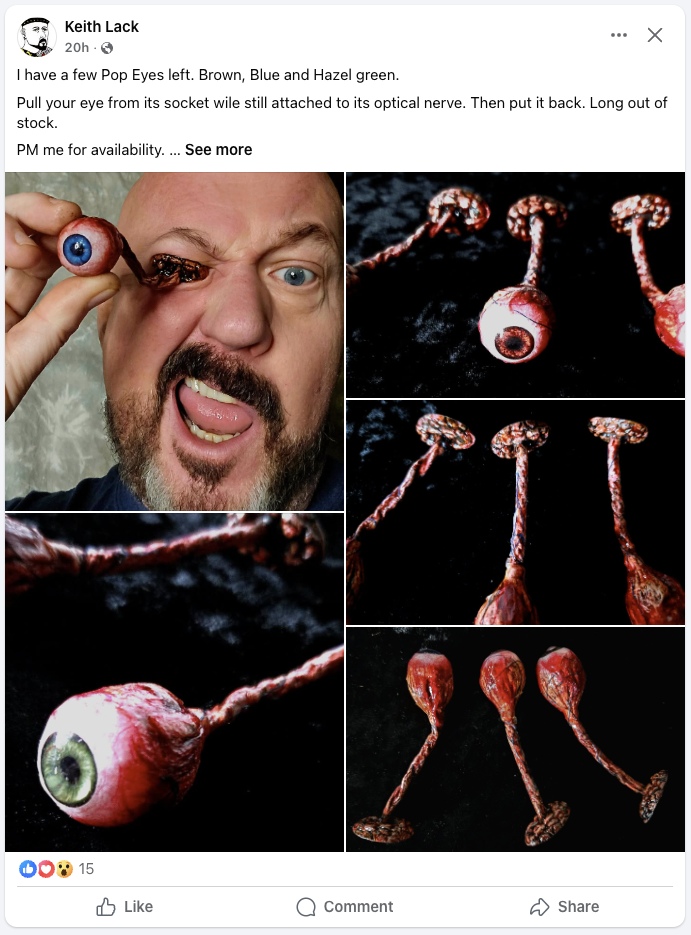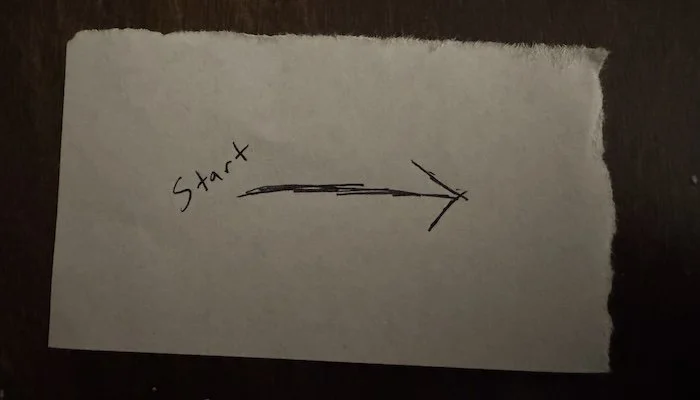Does David Copperfield Care About His Show? — Introducing Claudette Merrow
/I don’t see much live magic. It’s just not my thing. Just because I love sharing tricks with people in real life doesn’t mean I want to sit in a theater and watch someone else do it. I don’t know why this surprises some people. It would be like saying, “You like making jokes and laughing with your friends, right? Well, then you must want to go see Sister Act: The Musical!”
That said, I do enjoy reading about shows. As long as it’s a legitimate review and not some Genii puff piece.
I’m not interested in hearing someone trash a show just for the sake of trashing it, but I do like to get a genuine feel for the experience.
With that said, I’d like to introduce a new voice to The Jerx: famed theater critic, Claudette Merrow.
Claudette has been reviewing theater for fifty-five years, her work appearing in more publications than you can name. Many of us fondly remember her most famous recurring columns: Under the Lights, Curtain Call, Center Stage, The Footlight Files, Scene & Heard, Notes from the Balcony, Two Drinks into Intermission, Coughing in the Mezzanine, I Lost My Virginity to Mandy Patinkin, The Concession Stand Is Out of Bit-O-Honeys, and, of course, There’s Cum on This Seat, her uncomfortably thorough coverage of Times Square’s porn theaters.
I met Claudette at a Mennonite orgy last spring and told her she could write magic show reviews for this site if she ever felt inclined. I don’t know if this will be a one-off or the start of something recurring, but here’s her take on Copperfield’s current Las Vegas show.
[For anyone who has seen the show, please scroll to the end for a quick poll.]
In September I visited Las Vegas for the first time in my life. My married friends Emily and Greg wished to renew their wedding vows and wanted to do so in a kitschy way, and Vegas seems the perfect place. It was really more like a group vacation that happened to have a wedding element, and served as a reunion for some friends we hadn't seen in person for quite a while (one going on almost ten years).
Being people who mostly resist the kinds of things Las Vegas is known for, we decided to indulge in stereotypical tourist activities for the experience. We went to the Bellagio fountains, had our pictures taken with showgirls, ate at several buffets, played (and lost) at several gambling tables, and took in some big Vegas shows. And Vegas being the home of many big name magicians, the obvious choice for a magic show was David Copperfield.
Now I raised my kids on his TV specials, and I even saw him live once when he was on tour back in the 90s. His style of magic is not to my particular taste, but I always appreciated his enthusiasm for what he was doing, cheesy as it may have been. I went into this new show thinking it would be a fun throwback, not amazing but certainly worth the time spent. I came out thinking something else, which is the title of my review:
Does David Copperfield Give Even the Littlest Shit About His Show Anymore?
Upon first arrival, the answer to that question would appear to be yes, given the number of signs that prohibit photographs and videos, and add the unnecessary note that the show and its contents are copyrighted. Before the show starts there is a verbal announcement, warning us that we will be ejected if we are caught with a recording device. Everyone is instructed to turn off their phones and place them into boxes located at our tables. This is to keep them out of sight and prevent us from using them at all during the evening. That sounds like something that someone who cares about and wants to protect his show would do, but that feeling changes right away.
Just before David is brought on stage, we are asked to turn our cell phones back on and send an email to a special address with our hometown so they can populate a map of the audience. Making us go through the trouble of putting our phones away only to immediately ask us to use them is very disrespectful. I'm already bothered at this point and literally nothing has happened yet. Their rules are no pictures, but nobody said anything about writing a review.
David arrives via his appearing motorcycle illusion. This is a great start, and exactly what I came here for: a magician hopelessly stuck in an era long past. I know that sounds disparaging, but I'm being honest. I want that nostalgic cheese. It's the purpose of the entire trip.
But the show itself has a nostalgia theme, and that's clashing with what I came for. David is looking back on his life, telling us about his childhood and his relationship with his father, which is sweet and all, but it's not "hey I think I'm still cool enough to ride a motorcycle."
And I'm willing to follow him on this journey into his personal past, but the way he addresses the audience prevents this. He speaks quietly, often mumbling, and very fast. The impression I get is that he is running a tech rehearsal of the show. "Say my line, say my line, point, cue illusion, take a bow, stagehands set up the next illusion, repeat." He does have interactions with the audience, but it really feels like he's running on autopilot. It's as if spending so many years with high tech illusions has caused him to change into an automaton himself. There are only two moments where he seemed to be alive and present, which were jokes about tariffs on China and one about RFK, Jr - I feel it's because they are the only new jokes to be added in years (the next newest jokes are about Covid, and everything else is solidly vintage). I'd be all for the old tired jokes being used if they were delivered with strange enthusiasm instead of tired apathy. I pretty quickly got the sad impression that David doesn't love magic anymore.
As for the tricks themselves, they are competently executed, but the variety is lacking. Appearing motorcycle, appearing car, appearing spaceship, appearing dinosaur. Each is impressive, but they are all essentially the same trick. There are three tricks which are a prediction on printed matter. Not even a mentalist would do that in a show. And then there's a transposition trick using an audience member.
Sorry, that needs quotes: using an "audience member."
Obvious plant is obvious, and there are quite a few used in the show. At some point David learned that if you want to use a duplicate person, it's good to dress them up in very recognizable clothing, like a loud Hawaiian shirt. That's great for duplicates, but not for regular stooges. Even the people who are only there to encourage the crowd by calling out suggestions when asked, or clapping, or leading a standing ovation are blatantly attired.
The bulk of the show is dedicated to an alien, which I will say right off the bat is a highly impressive bit of technology. But the script for that section is incredibly schmaltzy, even by Copperfield standards. It feels like someone wrote a spec script to get hired as a Disney screenwriter, was rejected, and repurposed it for this show. It might work better if David delivered his lines with any kind of motivation that is not "get to the next part."
Everything about this show is preprogrammed to run exactly the same way every time, and it feels like a Disneyland ride more than a magic show. It's just so fake. Even moments that should seem real - like when he shows photographs of his parents - end up becoming obvious actors hired to play the part. The audience did not seem particularly enthusiastic, apart from the plants of course. I think if it were actually an amusement park show that community theater kids run every hour audiences would appreciate it more. But as a DAVID COPPERFIELD EXPERIENCE, it is sorely lacking.
If he happened to be ill the night I saw him I'd understand, but I've spoken with many people since and everyone who has seen the show the past few years has had the same experience.
All in all this is a terrible disappointment, and just sad, particularly because he is clearly not happy to be there. That made two of us.
—Claudette M.
Ouch, Claudette! That’s harsh. Personally, I only have positive memories of David’s live performances. But I haven’t seen him in 30 years.
But, I’m curious, have you seen Copperfield’s current show? If so, what’s your take?
I just want to get a sense of what the general consensus is. Is it worth the trip to Vegas? If 90% of people say it’s great or terrible, I’ll probably go—I’m always up for seeing either a masterpiece or a trainwreck. But if it lands somewhere in the middle, I’ll probably skip it.
And look, to be fair, if the show isn’t that good—well, he’s a 70-year-old billionaire. It wouldn’t shock me if he’s lost a bit of the hunger to create something truly transcendent. And Vegas tends to turn a lot of performers into people just coasting toward the finish line.
But I’ll always have a soft spot for David. His yearly magic specials were one of the few sources of magic we had back then. Think about that. You could easily go a whole year without seeing a single other bit of magic on TV, or anywhere else for that matter. No wonder those shows meant so much to those of us who were young and interested in magic at the time.
For that reason, I hope Copperfield doesn’t go out with a whimper. Come on, David! Scrap the current show and start fresh. Build something new and take it to Broadway for a few months. Put some pressure on yourself to perform in a city where people actually care about the theatrical experience.
“But I’m old, and winding things down.”
No! Stop it. That’s nonsense and I don’t want to hear it. You’re just going to give up? What…a 70-year-old with more money and success than he knows what to do with can’t reinvent himself? Can’t find the inspiration and drive to create the best, most relevant work of his life? He just has to fade into irrelevance? Why? Because that’s the way it always goes? Disgusting. And here I thought you believed in magic.








